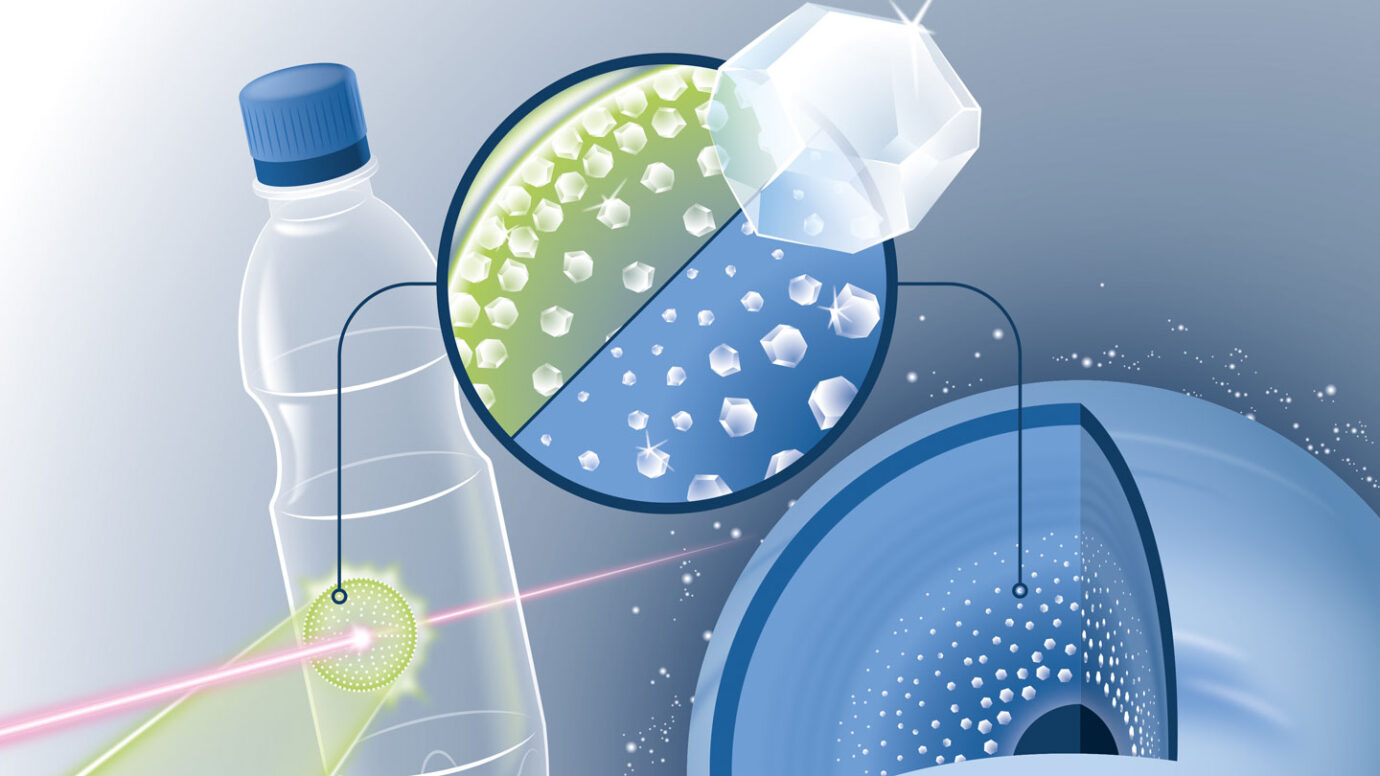The result suggests diamonds could shower down within planets such as Neptune and Uranus
A laser blast produces miniature diamonds from plain-old plastic. That’s right, the same kind used in soda bottles.
When squeezed to about a million times Earth’s atmospheric pressure and heated to thousands of degrees Celsius, polyethylene terephthalate, or PET, forms nanodiamonds, physicist Dominik Kraus and colleagues report September 2 in Science Advances.
Ice giant planets, such as Neptune and Uranus, have similar temperatures, pressures and combinations of chemical elements as the materials in the study, suggesting that diamonds may rain down in those planets’ interiors. What’s more, the researchers say, the new technique could be used to manufacture nanodiamonds for use in quantum devices and other applications.
In the new study, researchers trained lasers on samples of plastic. Each laser blast sent a shock wave careening through the plastic, amping up the pressure and temperature within. Probing the material with bursts of X-rays revealed that nanodiamonds had formed.
Previous studies had created diamonds by compressing compounds of hydrogen and carbon. But PET, which is commonly used in food and drink packaging, contains not just hydrogen and carbon but also oxygen. That makes it a better match to the composition of ice giant planets like Neptune and Uranus. The oxygen seems to assist the diamond formation, says Kraus, of the University of Rostock in Germany. “The oxygen sucks out the hydrogen,” he says, leaving behind carbon which can then form diamond.
Nanodiamonds are commonly produced using explosives, Kraus says, a process not easy to control. The new technique could create nanodiamonds that are more easily tailored for particular uses, such as quantum devices made using diamond with defects where, for example, nitrogen atoms replace some of the carbon atoms (SN: 7/6/18).
“The idea is quite cool. You take water bottle plastic; you zap it with a laser to make diamond. How practical it is, I don’t know,” says physicist Marius Millot of Lawrence Livermore National Laboratory in California, who was not involved with the new study. How easily the diamonds could be recovered is unclear, he says. But, “it’s pretty neat to think about the idea.”





Recommended Comments
There are no comments to display.
Join the conversation
You can post now and register later. If you have an account, sign in now to post with your account.
Note: Your post will require moderator approval before it will be visible.